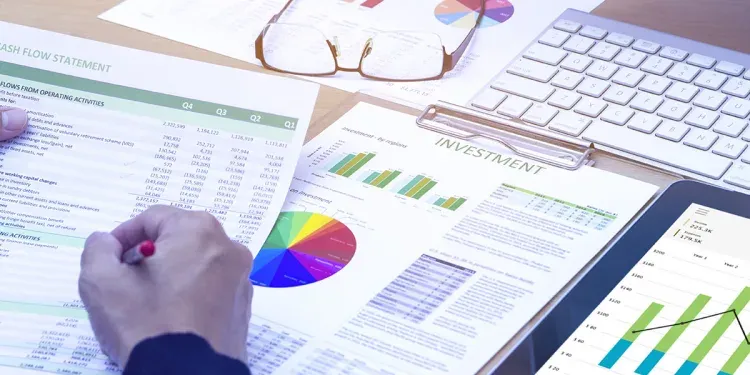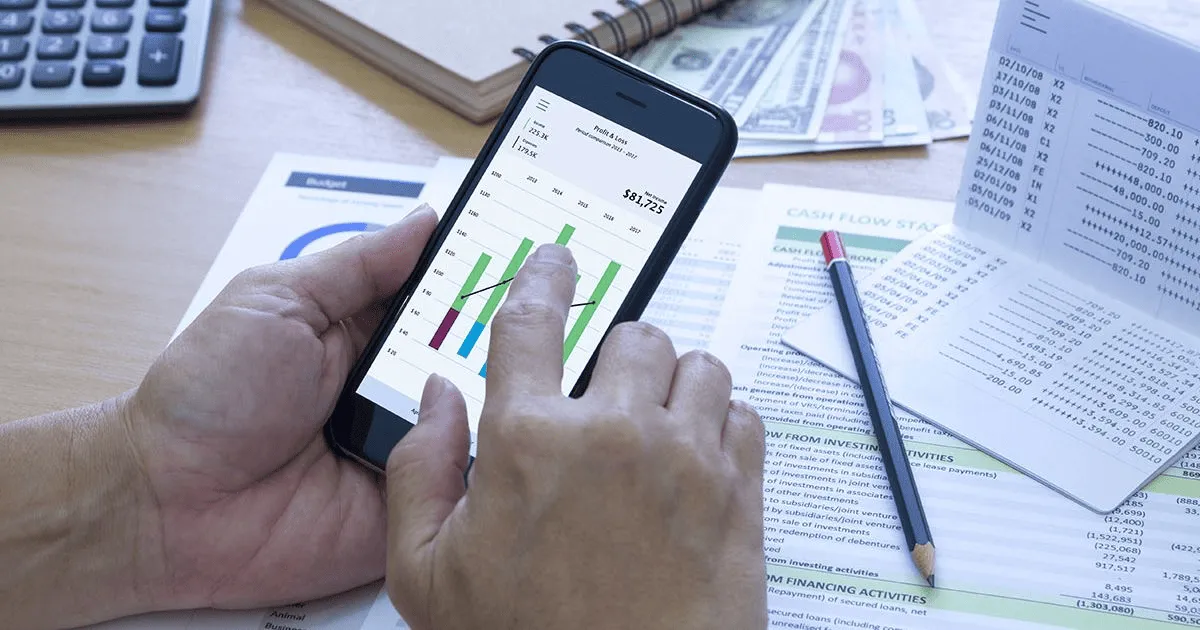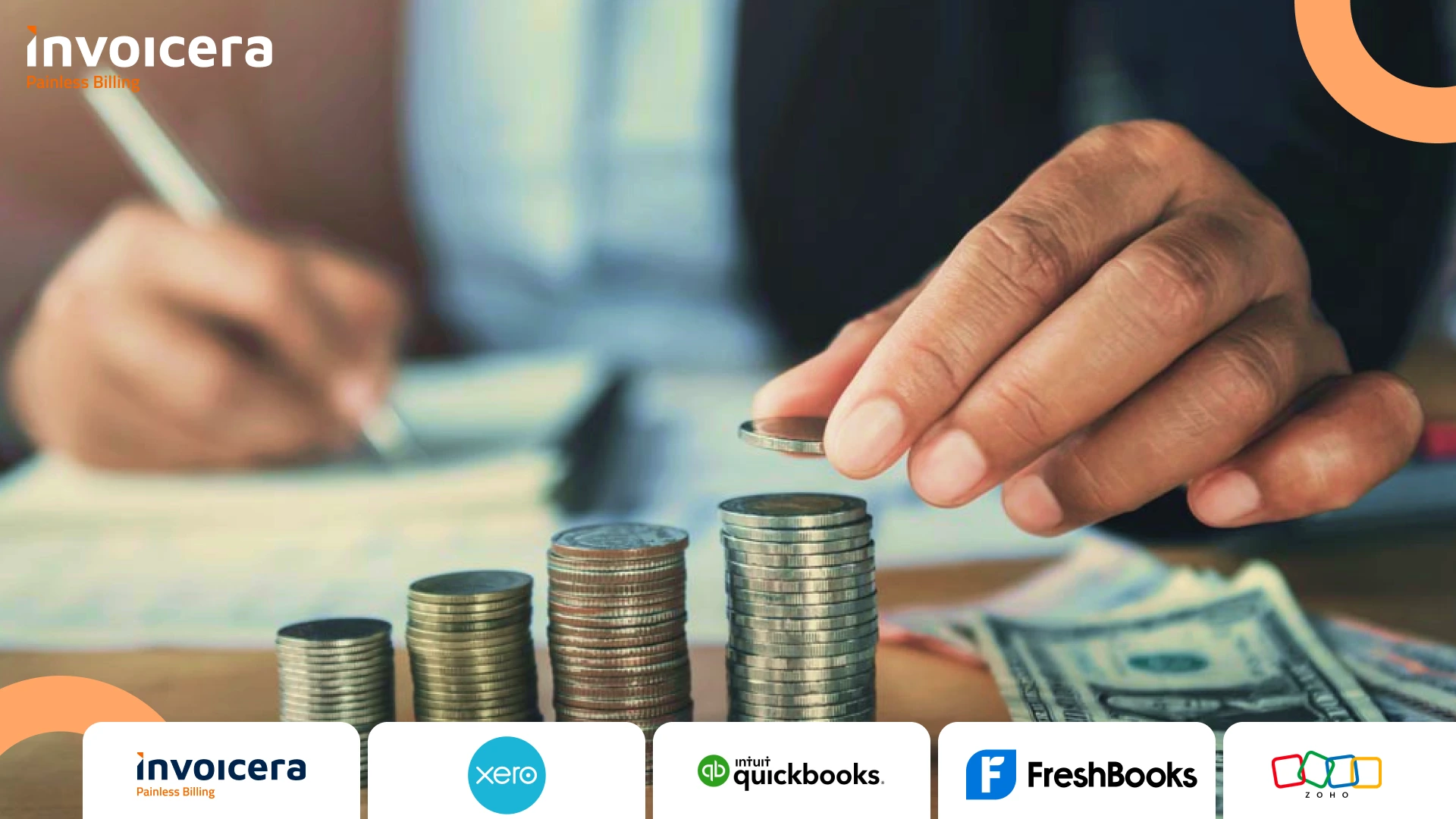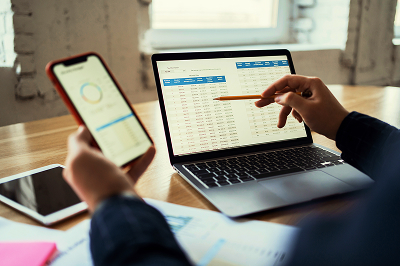Several technological advancements have changed the way we do business, and mobile payment apps are no exception. Payment apps make it easier than ever to connect with customers, clients, and vendors in new ways and on the go.
Mobile payment apps can be integrated into your cash flow model to improve the efficiency of your business and help you build trust with customers by offering fast and convenient service just with the tap of a button.
Here are seven ways mobile payment apps can benefit businesses that operate on a cash flow model.
What Is A Cash Flow Model?
A cash flow model is a tool businesses use to track their incoming and outgoing cash. Companies need to keep track of their cash flow because it allows them to make sound financial decisions about whether to expand their business and how much money they can afford to loan out.
- There are different parts of the cash flow model.
- The first is the income statement, which shows how much money a company has earned over a certain period.
- The second is the balance sheet, which shows how much money a company has.
- The next is the cash flow statement, which shows how much money a company has moved in and out over a specific period.
Businesses use the cash flow model to decide on investing, hiring, and making other big financial choices. Understanding how much cash they have coming in and going out avoids making wrong decisions that could put them in a difficult financial position.
7 Ways Mobile Payment Apps Can Benefit Businesses That Operate On A Cash Flow Model
1. No more cash in the drawer
It’s difficult to tell how much money you have in your cash drawer if it’s full of bills and coins. Trying to tally up your cash at the end of each day can be time-consuming and make balancing your books even more of a headache.
Mobile payment software is convenient for customers, it helps keep a better track of your daily sales and transactions. Integrating mobile app development services can further enhance the efficiency and functionality of payment systems. You can even receive instant alerts whenever someone tries to pay with an invalid form of payment.
With these real-time notifications, you can prevent fraud, help customers out and save yourself some time (and maybe even some embarrassment).
2. Control and Transparency
The most significant benefit that mobile payment apps can bring to businesses is control and transparency. Companies can track every penny coming in and going out with mobile payment apps like Invoicera.
This gives business owners greater control over their finances and makes it easier to see where money is being spent. Mobile payments can help businesses save on transaction fees by eliminating the need for third-party processors.
Overall, mobile payment apps can be an excellent tool for business owners who want to handle their cash flow better. With greater control and transparency, businesses can more easily identify opportunities to save money and improve efficiency.
3. Improve Customer Experience
Mobile payment apps can significantly benefit businesses that operate on a cash flow model by improving customer experience. Customers today can pay for goods and services using their mobile devices. Providing your customers with this convenience can increase sales and satisfaction.
In addition, mobile payment apps often come with a variety of features that can help businesses streamline their operations, such as the ability to track payments and send invoices electronically.
Implementing a mobile payment app can therefore help businesses improve their bottom line while making life easier for their customers.
Sign up to try the best invoicing software for a better customer experience-
4. Reduce Bank Fees
Businesses that operate on a cash flow model can benefit from mobile payment apps because the apps help them reduce bank fees. For example, if business owners take payments with a mobile payment app like Square, they don’t have to pay the processing fees to the banks. This saves the business owners’ money and helps them keep more of the profits from sales.
Additionally, mobile payment apps often offer other features that can be helpful for businesses, such as tracking sales data and generating reports.
So overall, using a mobile payment app can be beneficial for businesses that operate on a cash flow model.
5. Save Money by Having Fewer Refunds/Chargebacks
Mobile payment apps can benefit businesses that operate on a cash flow mode by saving them money. Businesses that use payment apps to process payments have fewer refunds/chargebacks. Integrating enterprise mobile application development into your business strategy can further reduce operational risks and enhance transaction security.
Refunds occur when customers ask for their money back after having already received the product or service they paid for. Chargebacks occur when customers ask for their money back after complaining about a purchase they made to their credit card company. Refunds and chargebacks cost businesses time and money. They waste time because employees need to process the refunds/chargebacks, and they waste money because businesses need to pay transaction fees and credit card processing fees. As you keep track of the Employee Net Promoter Score (eNPS), you’ll essentially notice the change in the employee satisfaction level and will have to take appropriate action.
Payment apps can help businesses reduce the number of refunds/chargebacks. Companies that use mobile payment apps provide customers with an easy way to track their purchases. Customers can use the app to view their purchase history, and they can also use the app to contact customer service if they have questions or concerns about a purchase.
Also Read:
6. Boost Client Engagement
Mobile payment apps can benefit businesses that operate on a cash flow mode by boosting the client engagement. By providing an easy and convenient way for customers to pay for goods and services, mobile payment apps can help to improve customer satisfaction levels and encourage repeat business.
Additionally, mobile payment apps can also help businesses keep track of spending trends and monitor inventory levels in real-time. This valuable insight can help enterprises make better-informed strategic stock management and pricing decisions.
Ultimately, by utilizing payment apps, businesses can enjoy many benefits that can help improve their bottom line.
7. Security and Peace of Mind
There are several benefits that companies can reap by implementing mobile payment apps. For one, security is improved since all transactions are routed through a secure system. This means there is less opportunity for fraud or theft, and businesses can rest assured knowing that their money is safe.
Additionally, mobile payment apps offer businesses a peace of mind by streamlining the process of conducting transactions. It can save companies money and time in the long run, as they don’t have to worry about manually keeping track of cash flow or spending time counting out bills and coins.
Overall, using a mobile payment app can be a great way to improve the efficiency and security of your business’s transactions.
Invoicera- The Powerful Tool For Cash Flow Management
1. Easy to Use
Invoicera is extremely easy to use, and even a novice can get started quickly. The software has a modern, intuitive interface, and all the features are just a few clicks away.
2. Keeps Your Business Organized
Invoicera helps you keep your business organized by automating your billing and invoicing tasks. It means less paperwork and more time to focus on your core business activities.
3. Send Professional Invoices
With Invoicera, you can send professional-looking invoices with ease. The software allows you to customize your invoices with your company logo, fonts, colors, etc. You can even create recurring invoices for regular customers.
4. Get Paid Faster
Invoicera makes it easy for your customers to pay you. The software accepts all major credit cards and provides options for ACH payments and PayPal. You can even set up automatic payment reminders to help you get paid on time.
5. Save Time and Money
Invoicera is a cost-effective solution that can save you both time and money. With Invoicera, you don’t need to hire an accountant or bookkeeper. The software takes care of all your billing and invoicing needs, so you can focus on running your business.
Invoicera is the perfect solution for small businesses and freelancers who need easy-to-use yet powerful invoicing software. You can save time and money while keeping your business organized and professional.
Closing Thoughts
Mobile payment apps are a boon to businesses that operate on the cash flow model. These apps allow business owners to track their expenses and income more closely, helping them stay on top of their finances.
In addition, payment apps make it easier for customers to pay for goods and services, leading to increased sales. Cash flow software makes managing your finances even easier, so be sure to check it out if you’re looking for a comprehensive solution.
Sign up to try the best cash flow management software for your business here-
Thanks for reading!!
FAQs
1. What are the advantages of mobile payment apps?
Ans. Using a mobile payment app has a lot of advantages. First, it’s more convenient than carrying around cash or cards. With a mobile payment app, you can pay for goods and services quickly and easily with your phone. This is especially useful for small transactions, such as buying coffee or doing parking.
Second, mobile payment apps are usually more secure than traditional methods like cash or cheques. When you use a credit card, your account information is stored on the card itself, making it vulnerable to fraudsters. With a mobile payment app, your account information is stored on your phone and encrypted, so it’s much harder for someone to access it without your permission.
Third, mobile payment apps offer rewards and discounts. For example, many apps offer cash back or points when you use them to pay for particular items. This can save you money on your everyday purchases.
Fourth, mobile payment apps keep track of your spending. When you use cash, it’s easy to lose track of how much you’ve spent. With a mobile payment app, you can see all your transactions in one place and get a better idea of where your money is going.
Finally, mobile payment apps are becoming more widely accepted. More and more businesses are starting to accept them as payment, so you’ll be able to use your app almost anywhere.
2. What are the different mobile payment systems?
Ans. There are different mobile payment systems:
PayPal: PayPal allows you to make payments using your PayPal account. You can either enter your PayPal email address or phone number at checkout or use the PayPal app to pay.
Square: Square enables you to make payments using your credit or debit card. Just swipe your card to transfer your funds immediately. Square is popular with small businesses and is sometimes used by larger firms.
Sage Pay: Sage Pay lets you make payments using your bank account. You can either enter your Sage Pay account number or phone number at checkout or use the Sage Pay app to pay.
Razorpay: Razorpay enables you to make payments using your credit or debit card. It is popular with small businesses and is sometimes used by larger enterprises.
As you can see, there are a variety of mobile payment systems available, each with its own set of features and benefits. When choosing a system, consider your needs and your customers’ needs.
3. How do you create a cash flow model?
Ans. The cash flow model represents how money moves in and out of a company. Investors typically use it to assess a company’s financial health and its potential for future growth.
Creating a cash flow model is relatively simple and can be done in Microsoft Excel or another spreadsheet program. The first step is to list all your revenue sources and expenses, including one-time items like equipment purchases. Then, estimate when each type of income or expense will occur.
Once you have your revenue and expenses listed, you can begin creating your cash flow model. Start by entering the beginning balance of your cash reserves. Then, for each subsequent period, calculate inflows and outflows of cash. To get the cash balance for each period, simply take the difference between all inflows and outflows.
- Cash Inflows are all ways that money comes into the business, such as from sales, investments, or loans.
- Cash Outflows are all ways that money goes out of the business, such as for expenses, debt payments, or equity investments.
- The Cash Balance is the difference between the inflows and outflows – it’s what’s leftover after all the bills are paid. If the balance is positive, extra cash is available; if the balance is negative, the business has a cash shortfall.
A cash flow model is a tool that can help businesses make decisions about how to use their cash best. By understanding the inflows and outflows, companies can decide when to spend money, save money, and invest money. The model can also track progress over time, so businesses can see if their cash flow is improving or worsening.
4. How does the cash flow model help businesses?
Ans. A cash flow model is a tool that businesses use to track and predict their inflows and outflows of cash. This information helps make financial decisions, such as investing in new equipment or expanding into new markets. The cash flow model can also help businesses assess their financial health and identify potential problems early.
By understanding the cash flow, companies can make informed decisions about the best use of their resources.
















